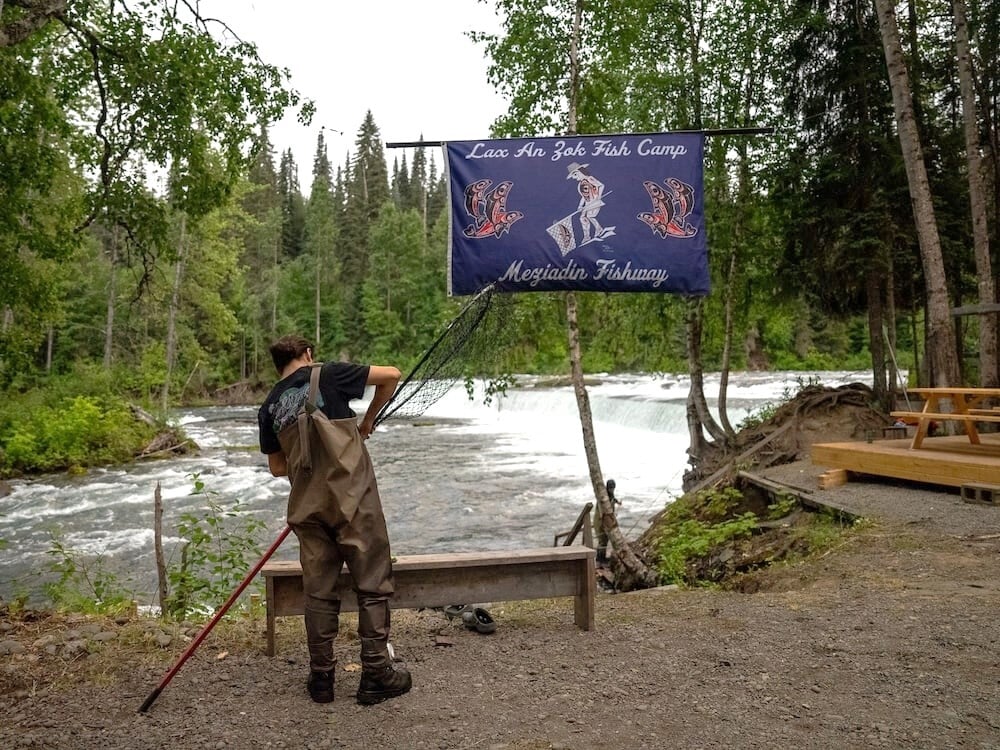As the glaciers that feed their spawning channels recede, the nation fights for sovereignty in their territory.
A Tyee special report.
In foaming whitewater at the base of a low waterfall on the Meziadin River in northwestern B.C., sockeye enact a ritual that has endured for millennia: with tails flailing, fish leap every few seconds, completing one more step in the long return journey toward their spawning creeks.
As they have also done since time immemorial, fishers from the Gitanyow First Nation — alongside one young grizzly — are there on the shore pulling sockeye from the river.
The Lax An Zok fish camp, which consists of a handful of simple cabins and several wooden platforms constructed for dip-netting, is situated just below the falls and a nearby fish ladder. It’s mid-July and the sockeye are abundant. Each time Matthew Daniels, a teen Gitanyow angler who’s been fishing these waters since he was 10, drags his net through the turbulent water, he scoops up at least two wriggling salmon.
Daniels, who’s a member of the Lax Gibuu, known in English as the Wolf Clan, says with a smile, “It’s kind of slow right now.” On a good day, a Gitanyow fisher can pull 400 or 500 sockeye from this river, he says.
